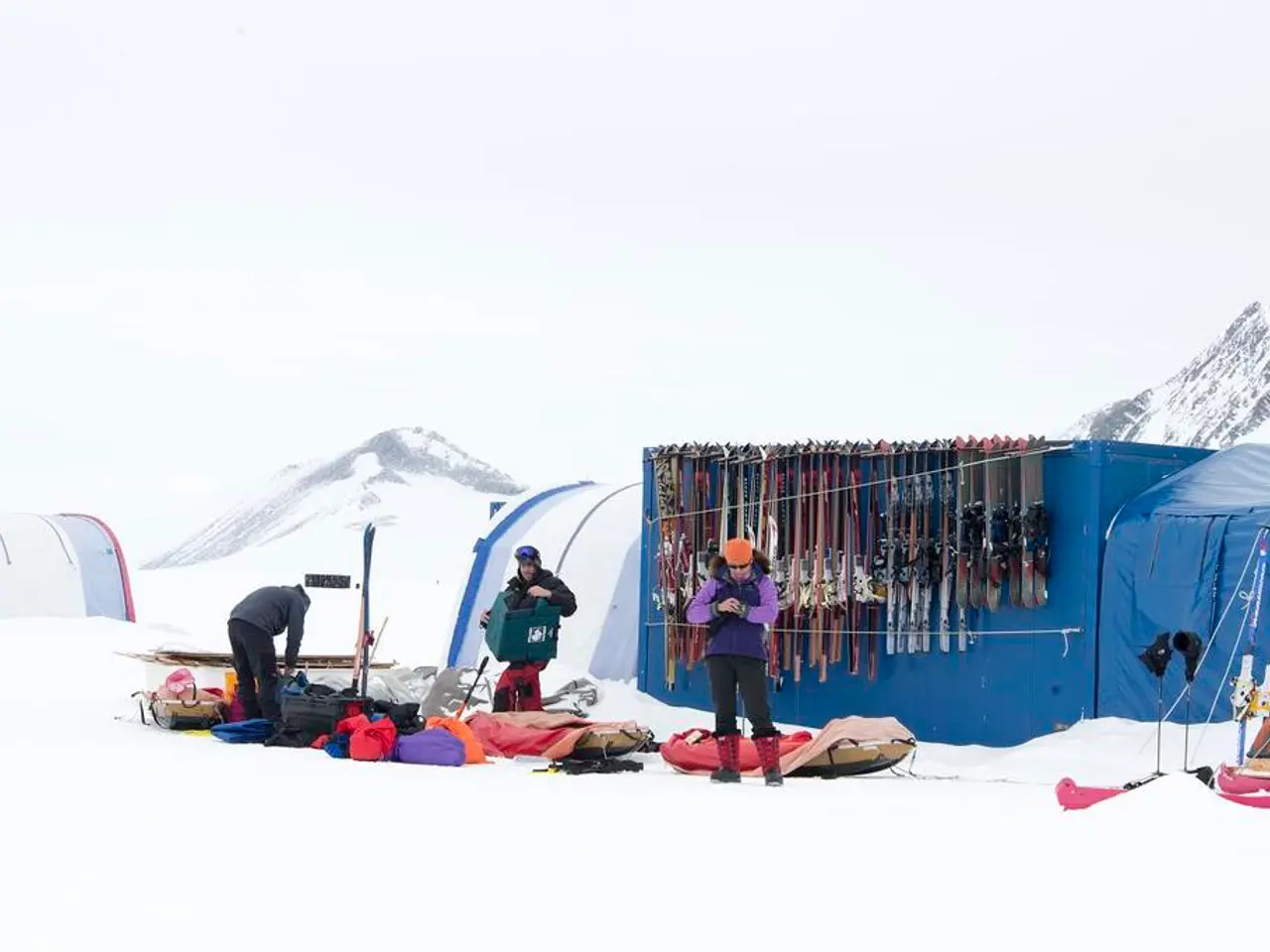Dangerous Adventure in the Mountains: Utilization of a Coat Hanger Along the Traverse - Unusual Scene on the Mountain Pathway: Clothes Hanger Spotted on the Sidewalk
Reckless Mountain Climbing Incidents on the Rise in the Alps
A disturbing trend of reckless behavior among mountain climbers has been causing an increase in distress incidents across the Alps, according to mountain rescue organizations and alpine clubs. The primary causes of this careless attitude are lack of experience, poor preparation, underestimating the difficulty, and a poor assessment of personal abilities.
In Austria, a Dutch tourist attempted to climb a Klettersteig in Kärnten with his 8-year-old daughter in 2024. In an attempt to secure her safety, he used a clothes hanger as a makeshift device, incorrectly attached to her waist. This incident underscores the dangers of inadequate preparation and incorrect safety methods.
Similarly, in Switzerland, mountain rescuers dealt with 3,570 people in difficulties during the previous year alone. This trend is not isolated to one country, as the German Alpine Association (DAV) has reported an increase in reckless behavior among mountain hikers.
One example from Austria involves a 48-year-old woman and her 13-year-old daughter who attempted a via ferrata in the Montafon region in 2025. Both were completely inexperienced, according to police. Social media images can mislead people into thinking they should have similar experiences, leading some to underestimate their abilities.
The widespread availability of mobile phone reception increases risk-taking behavior, as people believe they can call for help if needed. However, mobile phones do not function everywhere, and helicopters cannot fly in every weather condition.
Richard Lehner, a mountain guide and rescuer from Zermatt, attributes the dangers in the mountains to arrogance and egoism. He believes that planning tours with apps without properly assessing the way and conditions contributes to recklessness.
To combat this issue, mountain rescue organizations and alpine clubs are calling for better preparation, education, and caution among tourists and climbers. Klaus Drexel from the Bergrettung in Vorarlberg advises taking warning signs seriously, especially false pride.
In summary, the Alpine region is experiencing a significant increase in distress incidents due to reckless behavior among mountain climbers. This trend is caused by a lack of experience, poor preparation, underestimating the difficulty, and a poor assessment of personal abilities. Mountain rescue organizations and alpine clubs are working to educate climbers and tourists on the importance of proper safety measures and adequate preparation.
- The Commission, in light of the rising reckless incidents in the Alps, could propose a directive on health-and-wellness, focusing on the protection of workers from the risks related to exposure to ionizing radiation during mountain climbing activities.
- In the realm of science and fitness-and-exercise, it's crucial for climbers to undergo comprehensive training and education, to minimize the risks associated with inadequate preparation and understanding of the dangers in the mountains.




